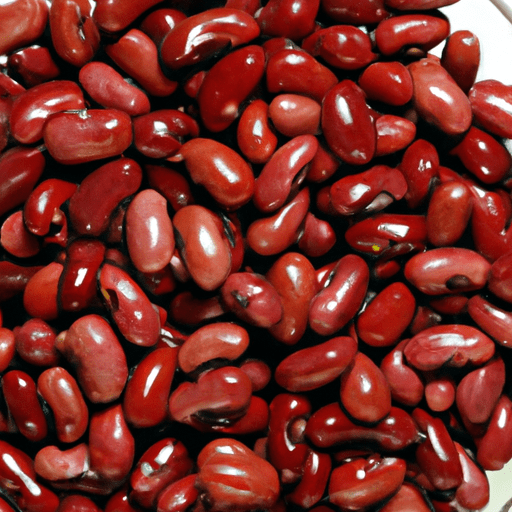Canned Cranberry Beans: A Nutritious and Versatile Ingredient for Every Kitchen
Canned cranberry beans, also known as borlotti beans or Roman beans, are a versatile and nutritious ingredient that deserves a prominent place in your pantry. These beautiful speckled beans have a creamy texture, delicate flavor, and a rich history. In this blog post, we’ll delve into the taste, common uses, nutritional value, and interesting facts about canned cranberry beans.
Taste and Texture
Canned cranberry beans possess a mild and nutty taste that pairs well with various flavors. Their soft, creamy texture makes them a popular choice for soups, stews, and hearty dishes. When cooked, these vibrant red beans turn a pale pink, giving your meals an enticing visual appeal.
Common Uses in Cooking
Cranberry beans are incredibly versatile and can be used in a wide array of dishes. Here are some popular ways to enjoy this tasty legume:
Soups and Stews: The creamy texture of cranberry beans adds depth and heartiness to soups and stews. They are commonly used in Italian minestrone and Tuscan ribollita, where their flavor and texture shine.
Salads: Canned cranberry beans are a fantastic addition to salads. Toss them with fresh vegetables, herbs, and vinaigrette for a nutritious and satisfying meal.
Dips and Spreads: Pureed cranberry beans can be transformed into a delightful dip or spread. Season them with herbs, garlic, and lemon juice for a delectable and healthier alternative to traditional spreads.
Pasta and Rice Dishes: Cranberry beans can be paired with pasta, risotto, or rice to elevate their flavor and add a protein-packed element to your meal. They work exceptionally well with creamy sauces.
Baked Casseroles: Incorporating canned cranberry beans into baked casserole dishes, such as cassoulet or vegetarian chili, creates a satisfying and comforting family meal.
Nutritional Value
Besides their delicious taste and culinary versatility, canned cranberry beans offer numerous health benefits. These legumes are rich in protein, dietary fiber, and essential nutrients. Here’s a breakdown of their nutritional value:
Protein: A 1/2 cup serving of canned cranberry beans provides approximately 8 grams of protein, making them an excellent plant-based protein source.
Dietary Fiber: Cranberry beans are packed with dietary fiber, with a 1/2 cup serving containing around 6 grams. High fiber content aids digestion, promotes satiety, and supports overall gut health.
Minerals: These beans are a good source of essential minerals, including iron, magnesium, and potassium. Iron is vital for red blood cell production, while magnesium and potassium contribute to maintaining healthy heart function.
Vitamins: Canned cranberry beans supply various vitamins, such as folate, thiamin, and vitamin B6. Folate is essential for cell growth and development, while vitamin B6 and thiamin play vital roles in energy metabolism.
Interesting History and Facts
Cranberry beans have a fascinating history dating back centuries. Here are a few intriguing facts:
Origin: Contrary to their name, cranberry beans are not related to cranberries. They are native to Central and South America but gained popularity in Italy, where they are widely enjoyed today.
Romano Beans: Cranberry beans are often referred to as Romano beans. However, true Romano beans are a broader category that includes various flat-podded beans of Italian origin.
Cultural Significance: In Italy, cranberry beans hold cultural significance as a symbol of good luck. Traditionally, Italians cook these beans on New Year’s Day to welcome prosperity and fortune.
Versatility in Italian Cuisine: Italian cuisine showcases the versatility of cranberry beans with classic dishes like pasta e fagioli, a beloved pasta and bean soup. They are also a popular ingredient in salads, stews, and risotto.
Conclusion
Canned cranberry beans are a fantastic addition to your pantry, bringing flavorful and nutritious options to your table. From soups and salads to dips and main dishes, their adaptability and mild taste make them a favorite in a variety of cuisines. So why not explore the world of cranberry beans and add a touch of color, texture, and health to your cooking repertoire?
Origin:
Cranberry beans, also known as borlotti beans, have been cultivated for centuries in Italy. They originated in South America and were brought to Europe by explorers during the 16th century. The name “cranberry bean” comes from the bean’s resemblance to the cranberry fruit when fresh.
Common Uses:
Canned cranberry beans are versatile and can be used in a variety of dishes. They are commonly used in Italian cuisine, specifically in soups, stews, and pasta dishes. They have a mild, nutty flavor and a creamy texture when cooked. These beans are also popular in Mediterranean and Middle Eastern cuisines.
Nutritional Benefits:
Cranberry beans are a nutritious ingredient with several health benefits. They are a good source of protein, fiber, and complex carbohydrates. These beans also provide essential minerals such as iron, magnesium, and potassium. Additionally, they are low in fat and cholesterol-free, making them a healthy addition to a balanced diet.
Unique Properties and Historical Significance:
Cranberry beans get their name from their vibrant red and white speckled appearance when fresh. However, when canned, they lose some of their distinctive coloring. These beans are unique in that they retain their shape and texture well after cooking. They are also known for their ability to absorb flavors from other ingredients in a dish.
In terms of historical significance, cranberry beans have been a staple in Italian cuisine for centuries. They have played a significant role in traditional Italian recipes, particularly in regions such as Tuscany and Umbria. These beans have also gained popularity in other culinary cultures due to their versatility and nutritional value.




Use the share button below if you liked it.
It makes me smile, when I see it.